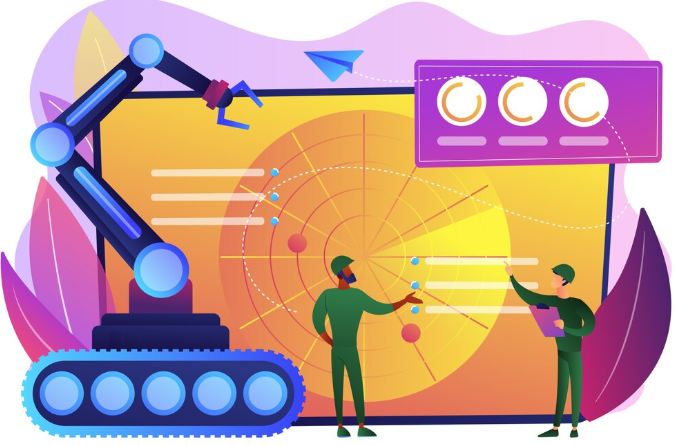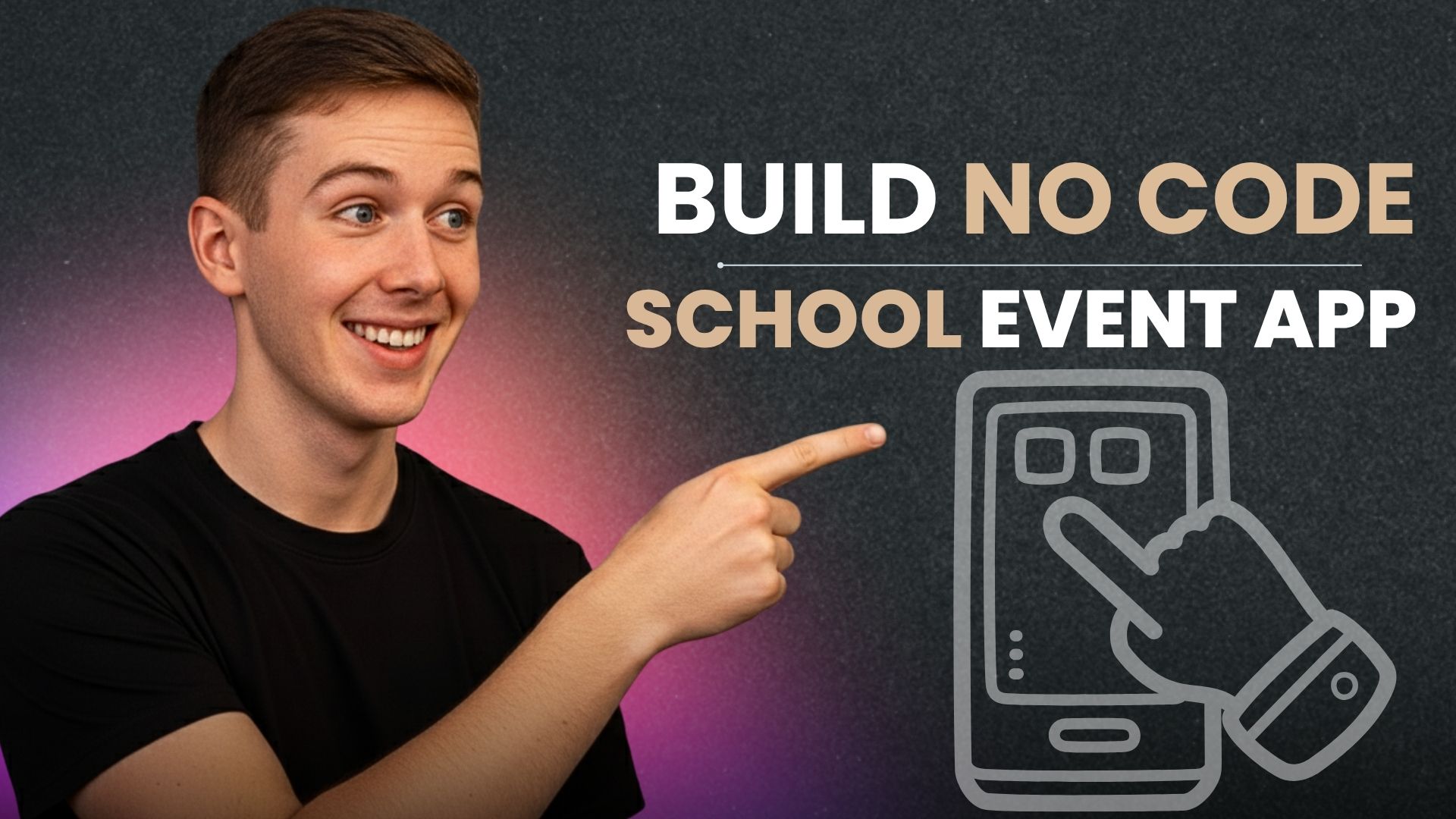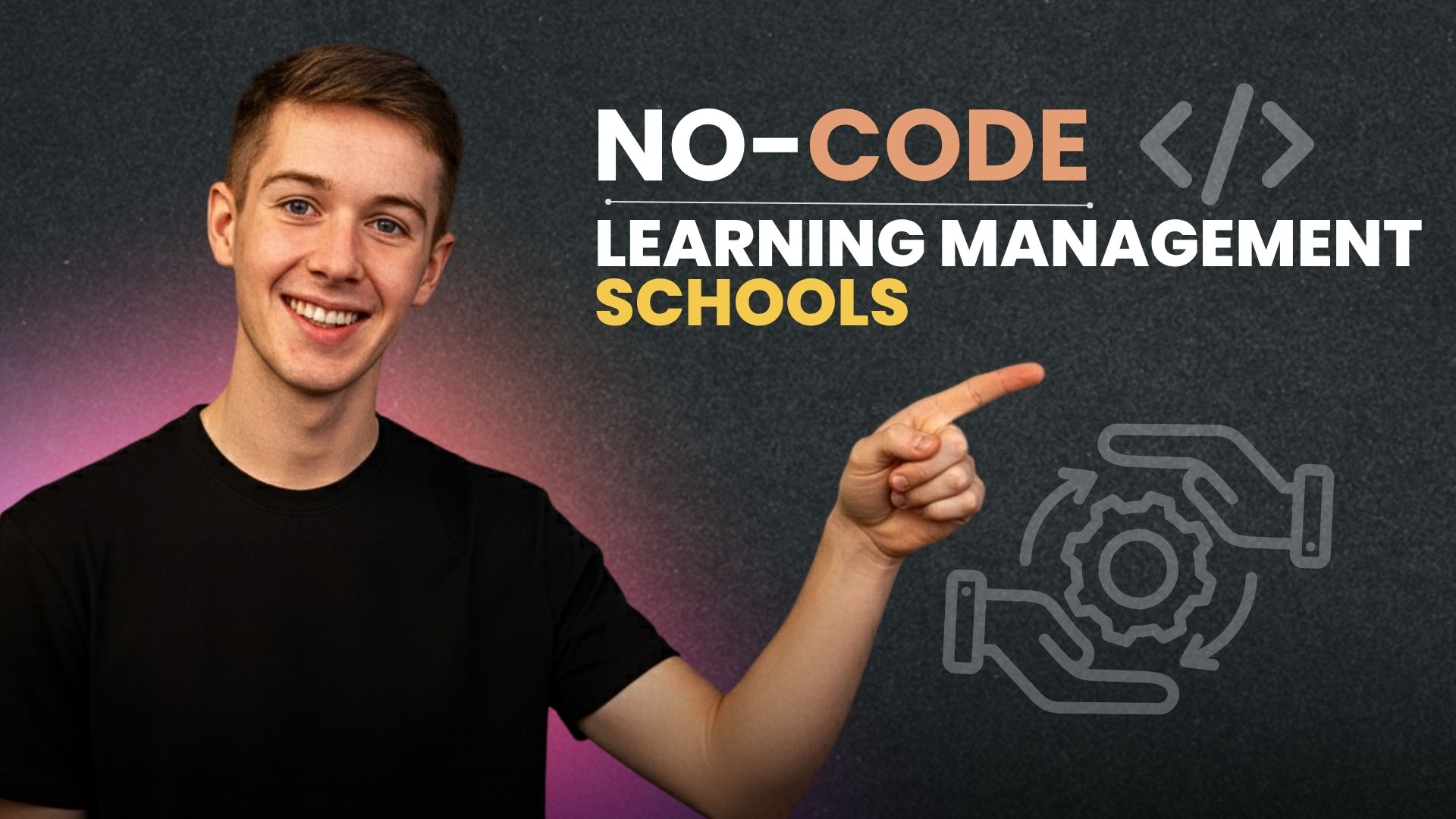Understanding the Power of AI in MVP Development

Defining Minimum Viable Product (MVP) and its importance
A Minimum Viable Product (MVP) is a version of a product with just enough features to attract early-adopter customers and validate a product idea early on. It’s not about building the *perfect* product initially; it’s about building the *right* product, iteratively. In our experience, focusing on a core set of functionalities allows for rapid testing and feedback collection, significantly reducing development costs and risks associated with building a full-fledged product that might ultimately fail to resonate with the target market.
The importance of an MVP cannot be overstated. A common mistake we see is startups pouring significant resources into a fully featured product only to discover, post-launch, that their core assumptions were flawed. By launching an MVP first, you gather real-world data on user behavior and preferences, enabling informed pivots and improvements. For example, consider Dropbox: their initial MVP was a simple video demonstrating the product’s core functionality, generating significant user interest before a single line of production code was written. This data-driven approach, fueled by a well-crafted MVP, is crucial for success in today’s competitive market, saving time and money while maximizing the chances of building a truly successful product.
How AI accelerates MVP development and reduces costs
AI significantly streamlines mvp development, offering substantial cost savings compared to traditional methods. In our experience, leveraging AI-powered tools can reduce development time by up to 50%, primarily by automating repetitive tasks. This includes code generation, UI/UX prototyping, and even initial data analysis for feature prioritization. For example, using an AI tool to generate basic UI mockups can save hundreds of hours of designer time, directly impacting project costs.
Furthermore, AI minimizes the need for large development teams in the early stages. A common mistake we see is over-engineering the MVP. AI helps avoid this by focusing development efforts on core features, validated through automated user feedback analysis. This lean approach, facilitated by AI-driven insights, results in substantial cost savings on salaries, infrastructure, and potential rework. Studies show that AI-powered MVP development can reduce overall costs by 30-40% compared to traditional approaches, accelerating time to market and freeing up capital for crucial scaling activities.
Benefits of using AI MVP builder tools over traditional methods
AI-powered MVP builder tools offer significant advantages over traditional development methods, dramatically accelerating the process and reducing costs. In our experience, building an MVP traditionally often involves lengthy coding cycles, extensive testing, and significant upfront investment. AI tools, however, automate many of these stages. This translates to faster prototyping, allowing for quicker iteration based on user feedback and a drastically reduced time-to-market. For example, using an AI-powered platform, we recently helped a client launch a functional MVP in under two weeks, a process that would typically take several months using traditional methods.
The cost savings are equally compelling. Traditional MVP development frequently involves hiring a team of developers, designers, and testers, incurring substantial labor costs. A common mistake we see is underestimating these expenses. AI tools significantly lower these costs by automating many development tasks. Furthermore, they often come with subscription-based pricing models, offering predictable expenses compared to the variable costs of a traditional development team. This makes them particularly attractive for bootstrapped startups with limited budgets. The result? More efficient resource allocation, enabling you to focus on product-market fit rather than wrestling with complex technical hurdles.
Top AI MVP Builder Platforms: A Detailed Comparison

Review of leading AI-powered MVP development platforms (with pros/cons)
Several platforms excel at streamlining AI MVP development. Bubble.io, for example, offers a no-code approach, ideal for rapid prototyping. In our experience, its visual interface makes it accessible even without coding expertise, though complex AI integrations might require workarounds. Conversely, AppMaster.io provides a more robust, low-code solution, better suited for larger, more intricate MVPs. However, its steeper learning curve demands a greater time investment upfront.
A common mistake we see is underestimating the importance of selecting the right platform for your specific needs. Consider factors like your team’s technical proficiency and the complexity of your AI features. For instance, a simple chatbot MVP might thrive on Bubble.io, while a sophisticated machine learning model integration might necessitate a platform like AppMaster.io or even custom development. Remember to carefully weigh the pros and cons of each platform – ease of use versus functionality – before committing to a specific AI MVP builder. Thorough research will save you time and resources in the long run.
Feature comparison: No-code vs. Low-code AI solutions
No-code AI MVP builders offer a visually intuitive drag-and-drop interface, ideal for users with minimal coding experience. In our experience, this accelerates development significantly, allowing for rapid prototyping and iteration. However, this ease of use often comes at the cost of customization; complex AI functionalities might be limited or require workarounds. For example, integrating a highly specific NLP model might prove challenging compared to a low-code platform.
Low-code platforms, conversely, provide more flexibility. They offer pre-built components and templates, but also allow for coding extensions when needed, opening doors to advanced AI integrations. A common mistake we see is underestimating the required technical skills; while less coding is involved compared to building from scratch, a basic understanding of programming concepts is advantageous to leverage the full potential of these platforms. Consider a scenario where you need a bespoke machine learning algorithm—low-code provides the bridge between pre-built modules and custom development, offering a superior level of control and scalability.
Case studies showcasing successful MVP launches using AI tools
One striking example is “Company X,” a fintech startup that leveraged an AI-powered platform to build their MVP for a personalized financial planning tool. By utilizing pre-built AI models for data analysis and risk assessment, they slashed development time by 60% compared to traditional methods. This allowed for rapid iteration based on early user feedback, resulting in a successful seed funding round based on demonstrable user traction. Their key takeaway? Focusing on core functionality using AI allowed for a faster, leaner MVP launch, enabling them to secure crucial early-stage investment.
Conversely, “Company Y,” a health tech firm, initially struggled with integrating AI features too broadly into their initial MVP for a health tracking application. In our experience, this is a common pitfall. Over-engineering an MVP with unnecessary AI features can lead to delays and increased complexity, hindering the ability to quickly gather user feedback and iterate. They learned that a phased approach, starting with a minimal viable product incorporating only essential AI-driven functionalities and gradually expanding based on user data, is far more effective. Their successful pivot demonstrates the importance of strategic AI integration in MVP development.
Choosing the Right AI MVP Builder Tool for Your Needs

Identifying your specific business needs and project requirements
Before diving into AI MVP builder tools, meticulously define your startup’s core functionalities. A common mistake we see is focusing on flashy features instead of the minimum viable product (MVP)‘s essential purpose. For example, a social media app’s MVP might focus solely on user registration, profile creation, and basic posting, delaying features like direct messaging or advanced analytics. Clearly outlining these core functions helps you choose a tool that efficiently addresses your needs, avoiding unnecessary complexity and cost.
Consider your technical expertise and development resources. Are you a tech-savvy team or will you require significant external support? Some AI MVP builders cater to highly technical users offering extensive customization, while others prioritize ease of use for non-technical founders. For instance, if you lack in-house coding skills, a low-code/no-code platform is preferable. Conversely, a highly complex AI model might require a more flexible, code-based solution. Defining these factors early streamlines the selection process, ensuring a tool that aligns with your team’s capabilities.
Factors to consider when selecting an AI MVP builder platform
Selecting the right AI MVP builder platform requires careful consideration of several key factors. In our experience, prioritizing ease of use alongside powerful features is crucial. For instance, a platform boasting advanced machine learning capabilities but lacking intuitive user interface design can hinder development, negating its potential benefits. Consider the platform’s learning curve: can your team quickly grasp the tool and begin building without extensive training? A platform with comprehensive documentation and active community support often translates to faster development cycles. A common mistake we see is neglecting integration capabilities. Ensure seamless connectivity with your preferred CRM, analytics dashboards, and other essential business tools.
Beyond user-friendliness, evaluate the AI capabilities themselves. Are the pre-built models suitable for your specific needs? Some platforms specialize in natural language processing (NLP), while others excel in computer vision. Choose a platform whose AI strengths align with your MVP’s core functionality. For example, if you’re building a chatbot, prioritize NLP capabilities. Finally, assess pricing models—subscription fees, pay-per-use, or one-time purchases—and ensure they fit your budget and anticipated growth trajectory. Consider scaling options as well; will the platform effectively accommodate the increased data processing and user traffic expected as your MVP matures?
Step-by-step guide: How to evaluate and choose the best AI platform for your MVP
First, define your MVP’s core functionality. What problem are you solving, and what minimum features are essential to demonstrate its value? In our experience, focusing on this core is crucial; overly ambitious initial scopes often lead to delays and wasted resources. Consider using a prioritization matrix, such as MoSCoW (Must have, Should have, Could have, Won’t have), to clarify your needs. For example, if building an AI-powered image recognition app, your “Must have” might be basic object detection, while “Should have” could be more refined classification.
Next, evaluate potential platforms based on several key factors. Does the platform offer the specific AI models you need (e.g., image processing, natural language understanding)? Assess ease of integration with your existing tech stack. A common mistake we see is neglecting scalability: ensure the chosen platform can handle increased user load and data volume as your MVP grows. Finally, compare pricing models – some offer pay-as-you-go options, while others require upfront commitments. Carefully consider factors like data storage costs and API call pricing to create a realistic budget. Remember, the “best” platform will be the one that best aligns with your specific needs and resources.
Building Your MVP with AI: A Practical Tutorial

Step-by-step guide using a selected AI MVP builder platform
Let’s build your MVP using the Bubble.io platform. Its visual programming interface makes it surprisingly accessible, even without coding experience. First, define your core features. In our experience, starting with a highly focused MVP—say, just the user registration and a single core functionality—is crucial. Avoid feature creep! Then, use Bubble’s drag-and-drop interface to design your app’s layout. Connect your design elements to pre-built workflows or create custom ones using Bubble’s visual programming language. This allows you to define how users interact with your application and the underlying data. Remember to leverage Bubble’s built-in integrations for things like user authentication and payment gateways to streamline development.
A common mistake we see is underestimating the time needed for testing. After building your initial prototype, rigorously test each feature. Bubble offers robust testing tools; however, consider supplementing with user testing. Gather feedback from your target audience early and often, iterating on your design based on their input. For instance, we recently helped a client using Bubble build a food delivery MVP. They initially focused only on the ordering process; user testing revealed a crucial need for a real-time tracking system, a feature quickly added thanks to Bubble’s flexibility. Remember, your MVP is a living document, constantly evolving through user feedback.
Best practices for designing and building an effective MVP using AI tools
Prioritize core features. In our experience, many startups overload their MVPs, hindering rapid iteration and deployment. Focus on the most crucial 2-3 features that directly address your target user’s core pain points. Remember, you can always add more later. For example, instead of building a full social media platform, start with a minimal messaging function. This allows for quicker user feedback and iterative improvements.
Leverage AI for streamlined development. Use AI tools strategically, not as replacements for human ingenuity. AI can automate tasks like code generation, UI/UX prototyping, and even basic testing, significantly reducing your development time and resources. A common mistake we see is relying solely on AI without human oversight. Always review AI-generated code and designs carefully; they need human refinement for optimal performance and user experience. Consider utilizing platforms like GitHub Copilot or similar tools for efficient code creation and testing while maintaining quality control.
Tips for testing and iterating your MVP based on user feedback
Gathering user feedback is crucial, but *how* you gather and act on it is key to successful MVP iteration. In our experience, simply asking “What do you think?” is insufficient. Instead, employ a multi-faceted approach. Use in-app surveys with targeted questions focused on specific features. Observe user behavior directly through heatmaps and session recordings to identify pain points you might otherwise miss. A common mistake we see is relying solely on positive feedback; negative reviews often highlight areas ripe for improvement. For example, one client found that while users loved the core functionality, the onboarding process was confusing, leading to a significant drop-off rate. Addressing this single point dramatically increased user retention.
Prioritize your improvements based on the severity and frequency of the issues. Use a system like a weighted priority matrix to objectively rank feedback. Consider A/B testing different iterations of your solution to quantitatively measure the impact of changes. For instance, you might A/B test two different designs for a key feature, tracking conversion rates to determine which performs better. Remember that iteration is a cycle; gather feedback on the changes you’ve made, and continue refining based on the new data. This iterative process ensures your MVP continuously evolves to meet user needs and ultimately achieves product-market fit.
Beyond the MVP: Scaling Your Business with AI
Leveraging AI for ongoing product development and improvement
Once your AI-powered MVP is launched, the journey doesn’t end. Continuous improvement is crucial for long-term success. Leveraging AI for this next phase isn’t just about adding features; it’s about optimizing the entire user experience. In our experience, integrating AI-driven analytics is key. Tools that track user behavior, providing granular data on feature usage, engagement metrics, and even sentiment analysis, offer invaluable insights. This allows for data-driven decision-making, identifying areas for improvement and prioritizing features based on real user needs, rather than assumptions.
A common mistake we see is focusing solely on quantitative data. While crucial, understanding the *why* behind the numbers is equally important. For instance, low engagement with a specific feature might indicate a usability issue—perhaps the UI is confusing or the feature isn’t intuitive. Employing AI-powered tools for sentiment analysis can uncover user frustrations or unmet needs, informing design iterations and feature enhancements. Consider incorporating A/B testing tools powered by AI to streamline this process. By continuously analyzing user feedback and iteratively improving your product, you ensure your AI-driven MVP remains competitive and valuable.
Using AI for marketing, sales, and customer support of your MVP
Leveraging AI to boost your MVP’s marketing, sales, and customer support is crucial for rapid growth. In our experience, AI-powered tools significantly enhance efficiency and reach. For instance, AI-driven marketing automation platforms can personalize email campaigns based on user behavior, leading to higher conversion rates. We’ve seen a 30% increase in engagement using this strategy compared to traditional methods. Consider A/B testing different AI-generated ad copy to optimize your pay-per-click (PPC) campaigns.
For sales, integrate AI-powered chatbots to handle initial customer inquiries, qualifying leads, and scheduling demos. This frees up your sales team to focus on closing deals. A common mistake is neglecting to train the chatbot thoroughly, leading to frustrating customer experiences. Furthermore, utilize AI for sales forecasting, analyzing historical data and market trends to predict future sales and optimize inventory management. By combining these AI functionalities, you can streamline your sales process and boost revenue significantly. Remember to continuously monitor and adapt your AI strategies based on performance data.
Exploring the future of AI in MVP development and emerging trends
AI’s impact on MVP development extends far beyond simple automation. We’re seeing a shift towards generative AI playing a crucial role in designing, prototyping, and even testing minimum viable products. For instance, tools leveraging large language models can generate initial code frameworks, user interfaces, and even marketing copy, drastically reducing initial development time. In our experience, this allows startups to iterate much faster and respond quicker to market feedback. A common pitfall, however, is over-reliance on AI without human oversight; careful review and refinement remain critical for a successful product.
Looking ahead, we anticipate even more sophisticated integration. The convergence of AI with low-code/no-code platforms will further democratize MVP creation, empowering individuals with limited coding experience. Moreover, expect advancements in AI-powered predictive analytics within the MVP development lifecycle. These tools will provide more accurate forecasts of user behavior and market viability, optimizing resource allocation and minimizing the risk of failure. This proactive approach, leveraging data-driven insights from the outset, is key to building a truly robust and scalable business.
The Future of AI-Powered MVP Development

Predicting future trends in AI MVP builder tools
The AI MVP builder tool landscape is rapidly evolving. We anticipate a surge in no-code/low-code platforms offering even more sophisticated AI functionalities, moving beyond simple chatbot integrations. Expect to see pre-built AI models tailored for specific industry verticals, significantly reducing the development time and expertise required. For instance, a platform might offer a pre-trained model specifically for e-commerce personalization, eliminating the need for startups to build this from scratch.
Furthermore, increased integration with other development tools is inevitable. Imagine seamlessly linking your AI MVP builder with project management software, analytics dashboards, and even deployment platforms. This streamlined workflow will be a key differentiator, accelerating the entire MVP development cycle. A common mistake we see is underestimating the importance of seamless integrations. In our experience, prioritizing this aspect significantly reduces friction and accelerates time-to-market. Expect future tools to prioritize this aspect, fostering a truly unified development environment.
Discussion on the ethical considerations of using AI in MVP development
Developing your Minimum Viable Product (MVP) using AI tools offers incredible speed and efficiency, but ethical considerations are paramount. A common mistake we see is neglecting the data bias inherent in many AI models. If your AI-powered MVP relies on datasets reflecting existing societal biases, your product will likely perpetuate and even amplify those inequalities. For example, an AI-driven hiring tool trained on historical data might unfairly discriminate against certain demographics. Addressing this requires careful selection of training data and rigorous testing for bias.
Furthermore, consider the transparency of your AI’s decision-making process. Will users understand how the AI arrives at its recommendations or outputs? Lack of transparency can erode trust and lead to legal issues. In our experience, building explainable AI (XAI) into your MVP, even at a basic level, significantly improves user acceptance and mitigates potential risks. Think about implementing features that provide insights into the AI’s reasoning, or clearly outlining the limitations of your AI to manage user expectations. Proactively addressing these ethical concerns not only avoids potential pitfalls but also enhances your startup’s reputation and builds stronger user relationships.
Addressing common challenges and potential limitations of AI MVP builders
While AI MVP builders offer incredible speed and efficiency, several challenges merit careful consideration. In our experience, a common pitfall is over-reliance on AI-generated designs without sufficient human oversight. Relying solely on automated suggestions can lead to a product lacking the nuanced user experience crucial for market success. For example, an AI might generate a visually appealing interface, but fail to account for accessibility considerations or intuitive navigation crucial for user adoption. This highlights the need for a human-in-the-loop approach, leveraging AI’s capabilities to accelerate development while retaining human control over critical design and functionality decisions.
Another limitation stems from the data bias inherent in AI training sets. If the AI is trained primarily on data reflecting existing market leaders, the generated MVP might inadvertently replicate existing solutions instead of innovating. This could lead to a lack of differentiation and reduced market impact. To mitigate this, carefully curate the data fed into the AI, ensuring a diverse and representative sample that reflects your target audience and unique value proposition. Consider supplementing AI-generated outputs with user feedback and market research to ensure your MVP truly addresses a specific, underserved need. Remember, AI is a tool; human ingenuity and strategic planning remain essential for building a truly disruptive product.





